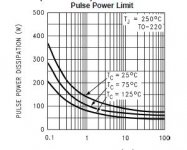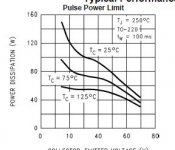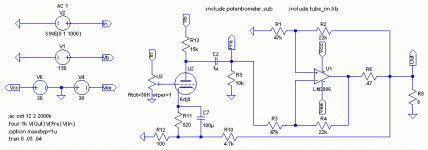I'm also a bit confussed by this. As you mentioned a tropical aquarium, they are heated so that the fish survive outside of their natural habitat. I've played a bit with LM3875/LM3386 chips along with other sand-based amps, and I guess I've always sunk them to keep them cool in their habitat... I'm just thinking that if you're arbitrarily buring 35 watts of heat through the sinks to warm up the chips to 70C, I'd do something with that instead.So the amplifier chip heatsink is being deliberately heated by a power resistor too?
Some more viariations on the theme using tubes:This basic circuit is usually called a "GainClone".
Quite a few variations around.
Hybrid GainClone Amplifiers
New Hybrid SE OTL? & Aikido Gainclone & Circlotron Lie Detector
heater
You are all right about this matter. As you can see, I used a big heatsink to cool the IC seriously ( one channel at a time is in use) ,but if I could not resolve the the problem of lowest spectrum defect ,I would simply considered the project a failure .I have numerous SE amps of my design to make use of .But, just by heating the IC the sound got "vivified "and perfected.I didn't want to know wheter it would be as good at 55° or 65°,the major issue was not the "domestic" but the triode .If it fuctions well ,why to trouble with this subject .
Later,I got interested in.When I plunged my head deeper in the datasheet , I found something very strange that you see on the figures bellow. You read on the top-right corner Tj= 250°C TO 220. This is the power dissipation capacity of the output transistors, as it existed first in TO220 casing. It is the only transistor I found on planet earth capable of functioning 100°C higher than normal ones. What is purpose ?
If I translate the technical curves into human language , it means if this transistor gets his head plunged in frying oil of 250°,his feet cooled upon a barbecue of 125° ,electrocuted by 70V ,it must still be singing loud and dissipate 30W (50w/8ohm output).Even a security (spike)provider is avoided .Now, where else you can imagine such extreme cruelty other than in HELL."(see "lm3886 singing at HELL°")
What sense does it make to design such extreme temperature power amplifier? The answer becomes simple ,if by heating to 70° , I got the sound vividefied ,then by heating very very high temperatures it becomes perfected. I was not wrong .This "domestic" gets metamorphosed into a king.
I, an allergic to IC amplifiers, became since ,the most devoted servitor of his majesty.
KOKORIANTZ
You are all right about this matter. As you can see, I used a big heatsink to cool the IC seriously ( one channel at a time is in use) ,but if I could not resolve the the problem of lowest spectrum defect ,I would simply considered the project a failure .I have numerous SE amps of my design to make use of .But, just by heating the IC the sound got "vivified "and perfected.I didn't want to know wheter it would be as good at 55° or 65°,the major issue was not the "domestic" but the triode .If it fuctions well ,why to trouble with this subject .
Later,I got interested in.When I plunged my head deeper in the datasheet , I found something very strange that you see on the figures bellow. You read on the top-right corner Tj= 250°C TO 220. This is the power dissipation capacity of the output transistors, as it existed first in TO220 casing. It is the only transistor I found on planet earth capable of functioning 100°C higher than normal ones. What is purpose ?
If I translate the technical curves into human language , it means if this transistor gets his head plunged in frying oil of 250°,his feet cooled upon a barbecue of 125° ,electrocuted by 70V ,it must still be singing loud and dissipate 30W (50w/8ohm output).Even a security (spike)provider is avoided .Now, where else you can imagine such extreme cruelty other than in HELL."(see "lm3886 singing at HELL°")
What sense does it make to design such extreme temperature power amplifier? The answer becomes simple ,if by heating to 70° , I got the sound vividefied ,then by heating very very high temperatures it becomes perfected. I was not wrong .This "domestic" gets metamorphosed into a king.
I, an allergic to IC amplifiers, became since ,the most devoted servitor of his majesty.
KOKORIANTZ
Attachments
The datasheet is not advocating high junction temperatures, but claiming that it can survive at high junction temperature.
If an amplifier genuinely works better when very hot then it means that the bias supply is not very stable and possibly the quiescent current has been wrongly set.
If an amplifier genuinely works better when very hot then it means that the bias supply is not very stable and possibly the quiescent current has been wrongly set.
possible alternative
If you are looking for another existing similar circuit, those proposed are not valid ,but one found on Italian website ,Mauro's my ref tube version instead of op amp ,can be modified to be a democratic hybrid amplifier.
The circuit is theoretic ,as it is ,it is an oscillator. But applying lower transconductance ,reducing overall gain and providing a dominant pole ,It must work. Whereas high voltage protection and start up facilities , can be inspired form Andrea.
What kind of sound it may give I can not predict .
If you are looking for another existing similar circuit, those proposed are not valid ,but one found on Italian website ,Mauro's my ref tube version instead of op amp ,can be modified to be a democratic hybrid amplifier.
The circuit is theoretic ,as it is ,it is an oscillator. But applying lower transconductance ,reducing overall gain and providing a dominant pole ,It must work. Whereas high voltage protection and start up facilities , can be inspired form Andrea.
What kind of sound it may give I can not predict .
Attachments
I don't understand the purpose of these circuits. The valve is obviously introduced to add some "tube sound" rather than being an input buffer. Therefore, don't put the valve in the fb loop, a circuit like Joe Rasmussen's "Tube Gainclone" linked above makes much more sense.
You've got to hand it to kokoriantz.
He brings out the braying "engineering" donkeys better than anyone in recent memory.
These folks talk lots about "science" when what they are really guided by is tried and true engineering which has nothing to do with science. But with science of a lame sort having become a peculiar form of religion there are many who have assumed the mantle of being scientists even though they have tried nothing unusual in their lives. They are scientists in the same way most in the US would identify as "Christians". They know very little about either discipline but they "identify" with it.
When you try something no one else has tried you are doing a sort of science. When you build a circuit based upon the current "best practice" recommendations you are doing nothing much at all other than assembling an amplifier. Of course, most, if not all of the naysayers will NEVER try any of kokriantz's ideas. Why try anything when you know it all!
This time it was like a race to see which one of them would get their comments posted first.
I make no pretense at being a scientist. I know I do not have the intrepidity so I admire it when I read it
Excellent work kokoriantz on many levels.
The blending of a circuit which has to have lots of heat with one you have found responds well to heat is a form of poetry. My favorite aspect is that they assume you know none of the common wisdom while you obviously have it all at your fingertips. It is difficult to go beyond the usual without knowing what the usual is.
You are a very interesting fellow and I enjoy reading of your exploits and thinking about what you say. Keep it up.
He brings out the braying "engineering" donkeys better than anyone in recent memory.
These folks talk lots about "science" when what they are really guided by is tried and true engineering which has nothing to do with science. But with science of a lame sort having become a peculiar form of religion there are many who have assumed the mantle of being scientists even though they have tried nothing unusual in their lives. They are scientists in the same way most in the US would identify as "Christians". They know very little about either discipline but they "identify" with it.
When you try something no one else has tried you are doing a sort of science. When you build a circuit based upon the current "best practice" recommendations you are doing nothing much at all other than assembling an amplifier. Of course, most, if not all of the naysayers will NEVER try any of kokriantz's ideas. Why try anything when you know it all!
This time it was like a race to see which one of them would get their comments posted first.
I make no pretense at being a scientist. I know I do not have the intrepidity so I admire it when I read it
Excellent work kokoriantz on many levels.
The blending of a circuit which has to have lots of heat with one you have found responds well to heat is a form of poetry. My favorite aspect is that they assume you know none of the common wisdom while you obviously have it all at your fingertips. It is difficult to go beyond the usual without knowing what the usual is.
You are a very interesting fellow and I enjoy reading of your exploits and thinking about what you say. Keep it up.
You are absolutely correct. This attempt of kokoriantz to think outside of the box is really commendable! We need more like this on this forum.You've got to hand it to kokoriantz.
He brings out the braying "engineering" donkeys better than anyone in recent memory.
These folks talk lots about "science" when what they are really guided by is tried and true engineering which has nothing to do with science. But with science of a lame sort having become a peculiar form of religion there are many who have assumed the mantle of being scientists even though they have tried nothing unusual in their lives. They are scientists in the same way most in the US would identify as "Christians". They know very little about either discipline but they "identify" with it.
When you try something no one else has tried you are doing a sort of science. When you build a circuit based upon the current "best practice" recommendations you are doing nothing much at all other than assembling an amplifier. Of course, most, if not all of the naysayers will NEVER try any of kokriantz's ideas. Why try anything when you know it all!
This time it was like a race to see which one of them would get their comments posted first.
I make no pretense at being a scientist. I know I do not have the intrepidity so I admire it when I read it
Excellent work kokoriantz on many levels.
The blending of a circuit which has to have lots of heat with one you have found responds well to heat is a form of poetry. My favorite aspect is that they assume you know none of the common wisdom while you obviously have it all at your fingertips. It is difficult to go beyond the usual without knowing what the usual is.
You are a very interesting fellow and I enjoy reading of your exploits and thinking about what you say. Keep it up.



Tried and true engineering is intimately connected with science; it is applied science. Fumbling in the dark, which sometimes passes for engineering, is applied ignorance.rickmcinnis said:These folks talk lots about "science" when what they are really guided by is tried and true engineering which has nothing to do with science.
Some of us on here are genuine scientists - we have qualifications and peer-reviewed publications to prove it. (Some of us are genuine Christians too, but discussion of that is off-limits for this forum.) Don't tell us what is genuine science and what is not - a real scientist knows the difference as we can smell it.But with science of a lame sort having become a peculiar form of religion there are many who have assumed the mantle of being scientists even though they have tried nothing unusual in their lives. They are scientists in the same way most in the US would identify as "Christians". They know very little about either discipline but they "identify" with it.
There is more to science than trying something daft.When you try something no one else has tried you are doing a sort of science.
Tautology? When you "build" you "assemble"? Maybe you meant to say that when you design a circuit based on accepted knowledge you are doing nothing much more than sound engineering? However, even sound engineering involves creativity.When you build a circuit based upon the current "best practice" recommendations you are doing nothing much at all other than assembling an amplifier.
There are lots of things in life which I don't intend trying. That is the benefit of civilisation and science; you can learn from other people.Of course, most, if not all of the naysayers will NEVER try any of kokriantz's ideas. Why try anything when you know it all!
Neither do I, but perhaps for a different reason from you.I make no pretense at being a scientist.
An audio circuit which only works when it is hot is faulty in either design or construction. The solution is to find and fix the fault, not heat it up. This is engineering.The blending of a circuit which has to have lots of heat with one you have found responds well to heat is a form of poetry. My favorite aspect is that they assume you know none of the common wisdom while you obviously have it all at your fingertips. It is difficult to go beyond the usual without knowing what the usual is.
Are you having a laugh or a brain fart?These folks talk lots about "science" when what they are really guided by is tried and true engineering which has nothing to do with science.
.The heatsink was tailored for 70°C dissipating 35W ,so I offered a 35w dissipating resistor along with a termo switch of 70°C to the heatsink and I never heard the "domestic" complain of any thing else.
KOKORIANTZ
http://www.diyaudio.com/forums/atta...92d1473374668-20-years-ago-today-img_1907.jpg
http://www.diyaudio.com/forums/atta...93d1473374668-20-years-ago-today-img_1908.jpg
http://www.diyaudio.com/forums/atta...97d1473374772-20-years-ago-today-img_1912.jpg
Ok, so that is like running it at 70 degrees ambient temperature?
And when the chip produces to much you cut of the heating.
Then it makes more sense. (Even if I would not do it
My understanding of the 250 degrees documentation is that the chip can withstand short bursts of energy that the spike is not fast enough to track and respond to. But only to an extent so national is warning the user of to wide, spikes.
Last edited:
Sorry, it is of course the thermal shutdown circuitry that shuts the chip down at 155 degrees. See chapter 7.
http://www.ti.com/lit/an/snaa008b/snaa008b.pdf
The spike is much faster and responds in about 0.1-0.2 ms (And shuts the ship down at 250 degrees).
(I have a little problem seeing how long the ship can be over 155 degrees before the termal circuitry shuts it down. 100 ms?)
Is the trick that the global feedback of the composite amp makes the spike distortion (see figure 6 and 7) "go away" like in this video:
https://www.youtube.com/watch?v=6HWeg0Q8VP4&index=2&list=PLUl4u3cNGP62in17jH_DiJMkCGNM6Xni-
About 32:20 into the lecture.
http://www.ti.com/lit/an/snaa008b/snaa008b.pdf
The spike is much faster and responds in about 0.1-0.2 ms (And shuts the ship down at 250 degrees).
(I have a little problem seeing how long the ship can be over 155 degrees before the termal circuitry shuts it down. 100 ms?)
Is the trick that the global feedback of the composite amp makes the spike distortion (see figure 6 and 7) "go away" like in this video:
https://www.youtube.com/watch?v=6HWeg0Q8VP4&index=2&list=PLUl4u3cNGP62in17jH_DiJMkCGNM6Xni-
About 32:20 into the lecture.
Last edited:
snake oil thread candidategood lord...
Give up folks. The purple prose award for 2016 has just been won. No further entries will be accepted.

Interesting idea that at a given junction temperature, the sonics are improved.
This occurs only in IC's where the fast temperature variations of the outputs provoke undesired feedbacks .
- Status
- This old topic is closed. If you want to reopen this topic, contact a moderator using the "Report Post" button.
- Home
- Amplifiers
- Tubes / Valves
- ANDREA a Democratic hybrid amp for luxury sound


